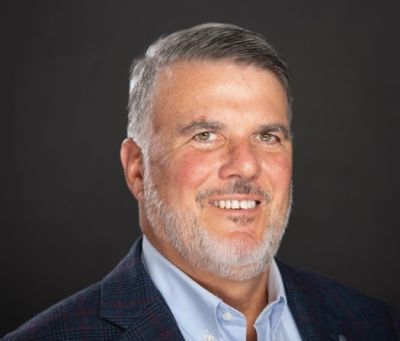Leaders of the organizations that work to shape agriculture policy emerged from a pandemic to face new challenges, including a downturn in many commodity markets. Salaries for those leaders have risen significantly in some cases, reflecting in part the competition to find and retain talent.
Agri-Pulse’s annual CEO report details compensation packages for more than 150 executives, based on IRS 990 reports filed this year for salaries paid in 2023 or 2022. The reports filed this year show a median salary of $460,000, an increase of 8.2% over the median salary disclosed in reports filed in 2023. The reports filed last year reflect salaries paid in 2021 or 2022.
By comparison, the Consumer Price Index rose 8% in 2022 and 4.1% in 2023, and is expected to increase by just over 3% this year.
The CEOs included in the report represent agricultural and food organizations, environmental advocates, and sectors such as banking, energy and agricultural inputs, spanning from the nation’s capital to Sacramento, California.
The top three earners in the 2024 Agri-Pulse report: Jim Matheson, CEO of the National Rural Electric Cooperative Association ($4,627,690), Robert Nichols, CEO of the American Bankers Association ($3,496,516), and Michael Sommers, CEO of the American Petroleum Institute ($3,483,050).
Some of the 990 reports used for the Agri-Pulse analysis are publicly available while others were provided by the organizations to Agri-Pulse upon request. This year’s report includes filings from 2022 and 2023, with many recently filed as recently as August. Nonprofit organizations are not required to disclose compensation below $100,000. Some of the groups have hundreds of staff, while others are as small as one person.
Compensation packages include base salary and potential bonuses, as well as retirement and other benefits, as reported on IRS forms.
“Compensation levels vary for a wide variety of reasons, but the board is ultimately responsible for CEO compensation,” said Brian Dunn, director of professional programs for the Institute for Compensation Studies at Cornell University.
It's common for larger organizations to have compensation committees, which often hire external consultants to advise them.
 Brian Dunn, Cornell University
Brian Dunn, Cornell UniversityHowever, some aspects of CEO compensation and demographics have never changed, Dunn said. “Pay is directly correlated to size, and it's also almost always true that the longer your tenure, the higher your pay.”
To get a starting compensation value, organizations often aim to pay their CEOs at or above the market median, which is calculated relative to a peer group of companies. Since “everybody's chasing the median, the median always goes up faster than it should,” driving salaries higher over time, Dunn said.
Organizations that tie compensation to performance have increasingly relied on formulas based on metrics such as revenue, margins and growth. However, Dunn said these metrics may not always reflect the impact a leader had on the organization’s performance, especially in exceptional situations like the COVID-19 pandemic. He said it's crucial to balance financial performance with strategic management initiatives, considering the unique circumstances of each business environment.
Salary increases varied by sector. Salaries reported in filings this year for conservation and environmental groups increased 12.34%, compared to 5.89% for renewable energy groups and 11.4% for agribusiness inputs and processing organizations.
Salaries for CEOs in membership organizations focused on education, research, and general farm groups increased by 12.12% in the reports filed this year.
It’s easy to be “in the know” about what’s happening in Washington, D.C. Sign up for a FREE month of Agri-Pulse news! Simply click here
Agriculture banking was the only sector analyzed by Agri-Pulse to see a decline in total compensation change, with a 6.46% drop, primarily due to a significant 28% pay cut for a CEO transition at the American Bankers Association.
Similar declines due to transitions were noted in several organizations. The National Corn Growers Association cut its compensation in half following Jon Doggett’s retirement. The Organic Trade Association saw a 36% decrease after Laura Batcha’s long tenure. The California Association of Winegrape Growers reported a 53% cut after John Aguirre’s retirement.
Since last year’s CEO salary report, many groups have new leaders, including Lucas Lentsch, CEO of the United Soybean Board; Peter Bachmann, president and CEO of USA Rice; Kailee Tkacz Buller, CEO of the National Oilseed Processors Association; and Alexi Rodriguez, CEO of the Almond Alliance.
 Cam Camfield, Stratovation Group
Cam Camfield, Stratovation Group“Working in agriculture requires a specific set of skills ... it's not something just anyone can pick up,” said Cam Camfield, founder and CEO of Stratovation Group — an agriculture research, consulting, and marketing firm based in Columbus, Ohio.
Leaders in these roles are stepping up to handle critical policy issues like farm bill negotiations and a volatile farm economy, all while navigating an election year. Many organizations are also grappling with how to engage and retain members — whether individuals or companies — who may be facing their own financial hardships.
The COVID-19 pandemic tested the resilience of membership-based agriculture organizations.
Membership groups are undergoing a “transformation” to better serve their members, with some growth, but “compared to their non-ag peers, they are staying relevant,” Camfield said.
CEOs are also confronting rising wages and the increasing cost of doing business due to inflation. Increased wages and benefits are top of mind for their employees, themselves, and the industry, as they strive to “keep people even at parity with inflation,” Camfield said.
Nonprofit boards are increasingly discussing how to develop their next generation of leaders.
“I think if our business-to-business statistics look anything at all like our farmer statistics, the age of the industry participant is older than the average,” said Camfield. “We're going to need a lot more people to come in and try to fill those shoes as people start to retire and hang it up.”
CEOs in agriculture for the most part come from an agricultural background. "But we're seeing new entrants from the East and West coasts — folks from Silicon Valley with tech backgrounds, and from the East Coast, exploring vertical farming and other innovations,” said Camfield.
Forward-thinking leadership is crucial in agriculture, according to Mark White, workforce expert and economist in the Department of Agricultural and Consumer Economics at the University of Illinois Urbana-Champaign.
“One of the things we have now in agriculture, more than ever, is more information,” White notes. Visionary leaders are essential for building a skilled workforce pipeline, encouraging entrepreneurial thinking and communicating innovation in the industry.
For the full Agri-Pulse 2024 CEO Compensation Report, click here.


.png?1716329654)